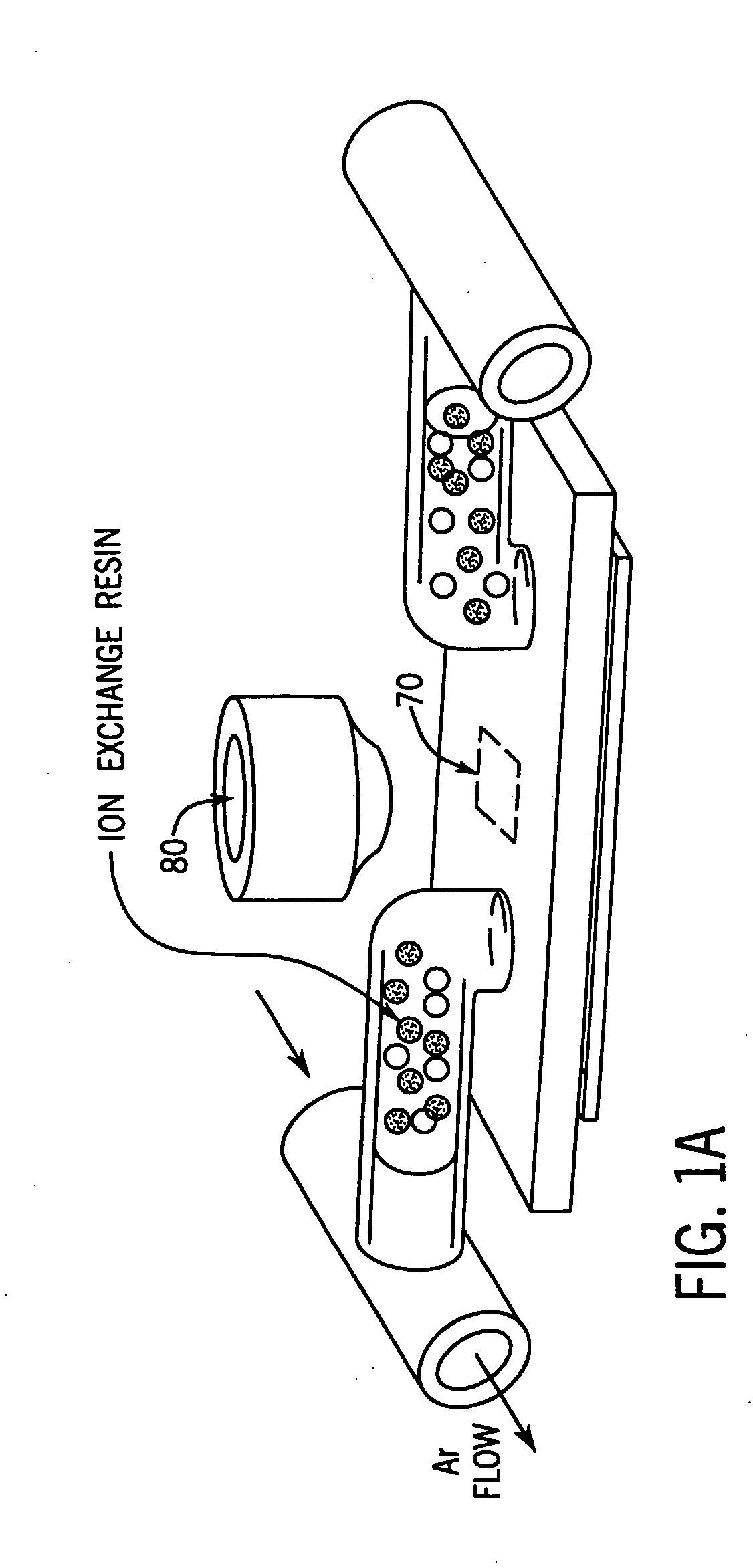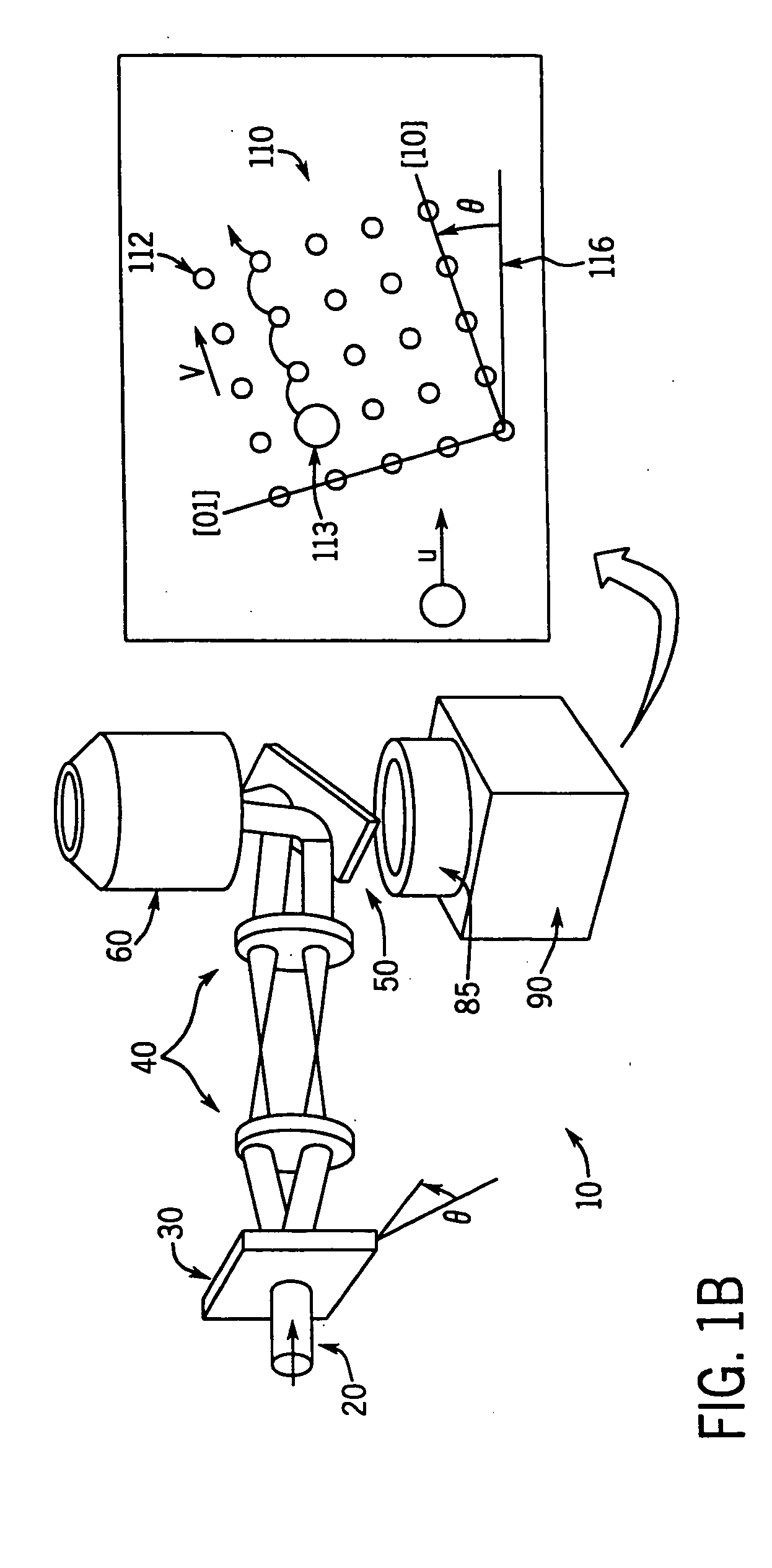Apparatus and process for the lateral deflection and separation of flowing particles by a static array of optical tweezers
a static array and particle technology, applied in the field of system and method for achieving particle fractionation, can solve the problems of requiring system flushing and restarting, affecting the efficiency of the system, and a number of limitations of the techniqu
- Summary
- Abstract
- Description
- Claims
- Application Information
AI Technical Summary
Benefits of technology
Problems solved by technology
Method used
Image
Examples
example
[0043] One preferred system, shown schematically in FIG. 1 includes 1.5 μm diameter silica spheres (Bangs Labs) dispersed in deionized water and confined to a horizontal layer 15 μm thick between parallel glass surfaces. These spheres are considerably denser than water and readily sediment into a monolayer about 2 μm above the lower wall of the sample container. The edges of the sample volume are sealed to form a flow channel. Two glass tubes bonded to holes through the upper glass wall provide access to the sample volume and serve as reservoirs for colloid, water and clean mixed-bed ion exchange resin. The ends of the tubes are connected to continuous flows of humidified Ar gas. Blocking one of the flows causes a pressure imbalance which drives colloid through the sample chamber and past the 75×58 μm2 field of view of a 100×NA 1.4 oil-immersion objective mounted on an Olympus IMT-2 microscope base. By controlling the flow of Ar, we can induce colloid to travel at up to 100 μm / sec o...
PUM
| Property | Measurement | Unit |
|---|---|---|
| tilt angle | aaaaa | aaaaa |
| tilt angle | aaaaa | aaaaa |
| tilt angle | aaaaa | aaaaa |
Abstract
Description
Claims
Application Information
 Login to View More
Login to View More - R&D
- Intellectual Property
- Life Sciences
- Materials
- Tech Scout
- Unparalleled Data Quality
- Higher Quality Content
- 60% Fewer Hallucinations
Browse by: Latest US Patents, China's latest patents, Technical Efficacy Thesaurus, Application Domain, Technology Topic, Popular Technical Reports.
© 2025 PatSnap. All rights reserved.Legal|Privacy policy|Modern Slavery Act Transparency Statement|Sitemap|About US| Contact US: help@patsnap.com



